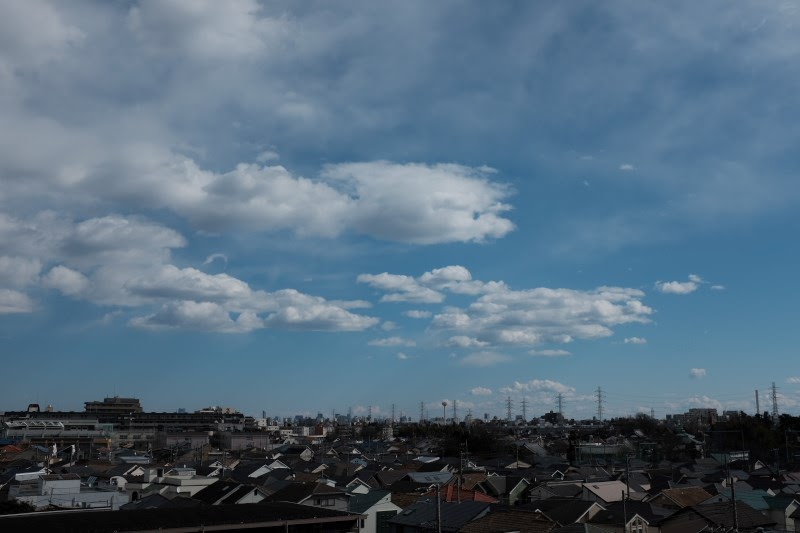
A look at exif metadata...

If you represent f-stop, shutter speed, ISO, luminance (reflected light), and illuminance (incident light) as a Base 2 log value, you can simplify the exposure calculation process... The "Additive System of Photographic Exposure (APEX)" is explored in a previous post (Ev addendum... November 2013).
From the detail explanation we can see that Ev=Av + Tv... the Exposure Value (Ev) can be represented as the sum of the Aperture Value (Av) and the Time Value (Tv) using the following formulas:
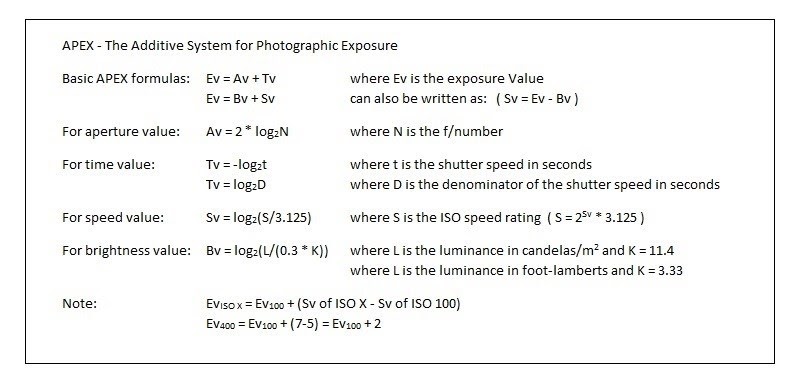
Ref : 01
Below is a test shot of a local apartment complex taken with a Fujifilm X100T and a partial list of the exif data.
ISO : 100
Shutter Speed Value : 1/150
Aperture Value : 4.9
Brightness Value : 7.57
Light Value : 11.9
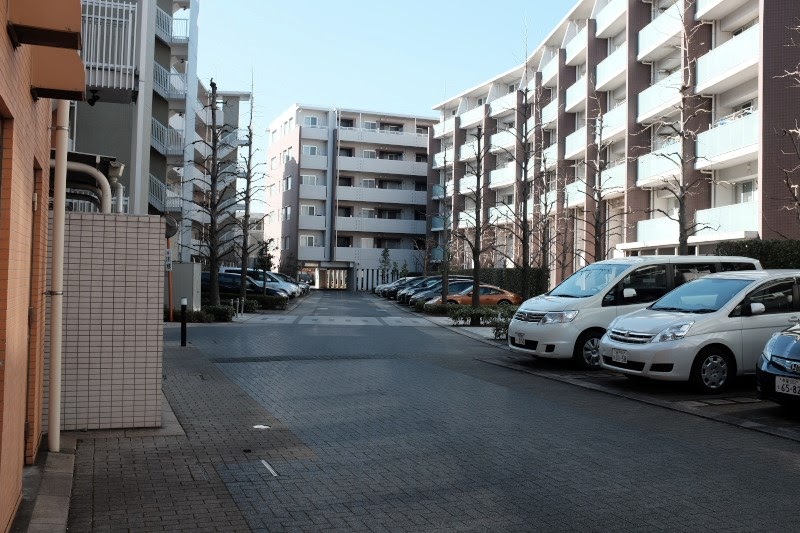
Ref 02 : Test shot of a local apartment complex
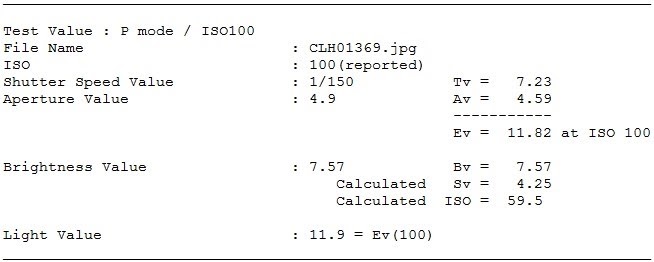
Ref 03 : APEX formulas applied to the test shot exif data
In the preceding we can see the application of APEX rules to the test shot metadata. The shutter speed value and aperture value are calculated to be Tv=7.23 and Av=4.59, the sum of which is an Ev of 11.82 at ISO 100.
__________
As a reminder Ev0 is defined as f/1.0 at 1 second and all other pairs that give an equivalent exposure... each stop of aperture or each doubling/halving of the shutter speed will increase (or decrease) the Ev value by one. Ev is ISO specific... Ev(ISOxxx)=Ev(ISO100) + log2(xxx/100). Ev15(200) are the same pairs of f-stop and shutter speed as Ev14(100). By definition the chart shown in Ref 04 defines the exposure pairs for Ev at ISO 100.
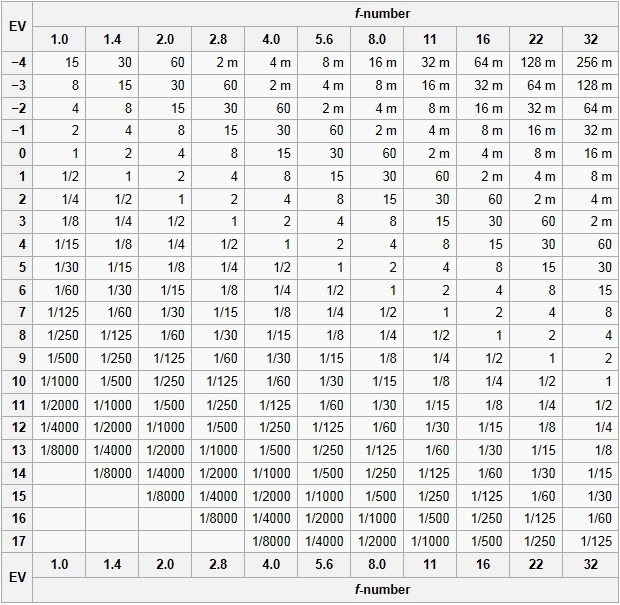
Ref 04 : Ev(100) Reference Chart
__________
Let's go back to "Ref 03 : APEX formulas applied to the test shot exif data" for a moment. Given that the Brightness Value (Bv) is provided by the test shot metadata and since we now have a calculated Ev=11.82, we can determine the actual ISO since we know that Sv=Ev-Bv... we end up with an actual ISO value of 59.5 (not ISO 100 as reported by the camera). As a cross check we can see that the reported Light Value of 11.9 is more or less equal to the calculated Ev=11.82 (at ISO 100). In the case of the X100T, the Light Value=the Exposure Value (Ev) at ISO 100.
Let's look at example of a cloud photo where where I took a base line photo and then another photo with -1 Compensation

Ref 05 : Test shot of some clouds above the city
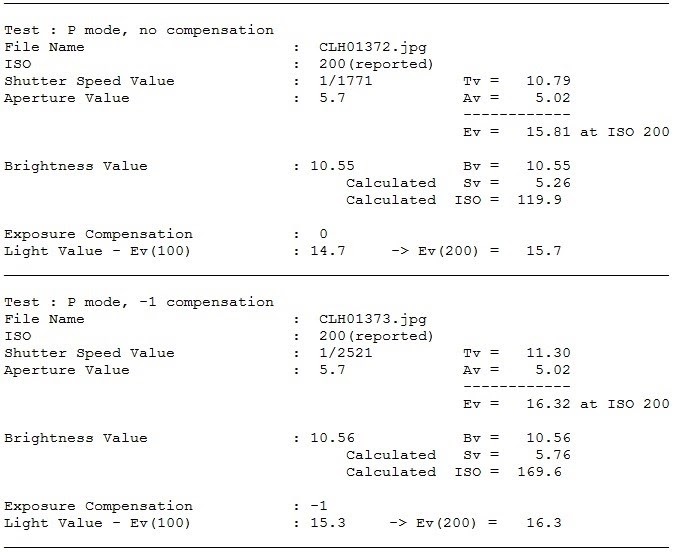
Ref 06 : Base line and -1 Compensation detail with APEX calculations
The cloud test photo was reported to be shot at ISO 200. Since I have 'determined' that the Light Value is actually the Ev at ISO 100, I have adjusted the Light Value by one step to show the EV at ISO 200. In the base line photograph (with no compensation) we can see that the calculated ISO is 119.9 rather than the reported ISO 200.
The cloud test metadata for the photograph with -1 Compensation shows how the exif information is adjusted. The photographs were taken a few seconds apart, so you can see that under the same lighting conditions the Light Value is adjusted based on the Exposure Compensation setting. Please note that a negative compensation will increase the Ev value where as a positive compensation will have the reverse effect on the Ev value (see Ref 04 : Ev Reference Chart).
The other point of interest is that the "actual" ISO has chanced between the base line photo and the photo with -1 Compensation. By comparing the two calculated ISO values we can see that a camera setting of -1 Compensation is in fact equal to about +2/3 Ev or -2/3 actual Compensation.
For the test shots shown and other testing I have done, I use the X100T metering option: Multi. I have to do further testing with "spot", "average", and "Face Detection" metering modes to see the resulting effect on the metadata. As well I was using in-camera jpg conversion and need to test if shooting RAW gives different results.
Some thoughts on what this means...
01) One of my favorite TV shows is "The Big Bang Theory" so it's nice that the numbers crunch in a logical and explainable way (at least until proven otherwise).
02) The exif data reported by the mfg. is not necessarily correct. It's well documented that the mfg. tend to over rate ISO values. While the reported f-stop and shutter speed seem to be accurate (at least they are non-standard) values, the ISO value always seems to be reported as a "standard value" (not fractions thereof).
03) The exif data from one camera may not be equal to the data from a second camera (given the same light and composition). The use of some exif tags tend to be mfg. specific.
04) Using the compensation feature (i.e. -3 to +3) may not give the same results as manually adjusting the f-stop, shutter speed, or ISO.
05) [Digital] ISO settings are relative... The X100T is a so called "ISO-Less" camera, which means you can process images taken at different ISOs to have the same look and feel. Whereas the results from a camera like the Canon 5D III are reported to be "ISO dependent" and cannot always be adjusted to look the same in post processing.
Thanks for reading,
Casey






Next Article
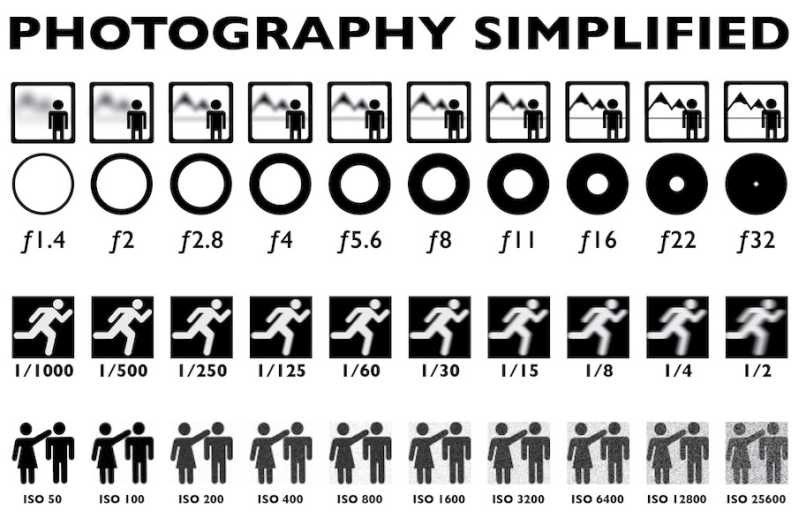

Does understanding photo theory limit us...

© 2017 - WatchProZine